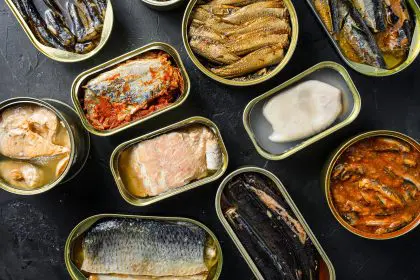Managing blood sugar levels doesn’t require complicated meal plans or expensive supplements. A simple three-food combination method can transform how your body processes glucose, preventing those energy-draining spikes and crashes that affect millions of people daily.
This approach works by leveraging the natural properties of different food categories to slow glucose absorption, enhance insulin sensitivity, and maintain steady energy levels throughout the day. The method focuses on strategic food pairing rather than restriction, making it sustainable for long-term health benefits.
Understanding how different foods interact within your digestive system provides the foundation for this method. When eaten in specific combinations, certain foods can dramatically alter how quickly sugar enters your bloodstream, creating a more controlled and manageable glucose response.
The science behind food combinations
Blood sugar spikes occur when glucose rapidly enters the bloodstream, overwhelming the body’s natural regulatory mechanisms. This typically happens with refined carbohydrates and sugary foods consumed alone. However, combining specific food types creates a buffer effect that slows this process significantly.
The three-food method capitalizes on how fiber, protein, and healthy fats work together to moderate glucose absorption. Each component plays a distinct role in creating optimal metabolic conditions that support stable blood sugar levels naturally.
Fiber acts as a physical barrier, slowing the movement of food through the digestive tract. This delayed transit time allows for more gradual sugar release, preventing the rapid glucose influx that triggers problematic spikes.
Protein stimulates the release of hormones that help regulate blood sugar while also slowing gastric emptying. This dual action creates a more controlled environment for glucose processing.
Healthy fats further slow digestion while supporting the production of hormones involved in glucose metabolism. They also help increase satiety, reducing the likelihood of overeating foods that could destabilize blood sugar.
Food category 1: Fiber powerhouses
The first component focuses on incorporating high-fiber foods that provide both soluble and insoluble fiber benefits. These foods create a gel-like substance in the digestive tract that significantly slows sugar absorption.
- Leafy greens like spinach, kale, and arugula offer substantial fiber with minimal carbohydrate impact. These vegetables can be consumed in large quantities without affecting blood sugar while providing essential nutrients that support glucose metabolism.
- Cruciferous vegetables including broccoli, cauliflower, and Brussels sprouts provide fiber along with compounds that may enhance insulin sensitivity. These vegetables also offer volume and satisfaction to meals without contributing to glucose spikes.
- Non-starchy vegetables such as bell peppers, zucchini, and cucumber add fiber, nutrients, and flavor while maintaining minimal impact on blood sugar levels.
Beans and legumes deserve special mention for their unique combination of fiber and protein. These foods provide sustained energy release while offering significant blood sugar stabilizing effects when incorporated into meals.
Food category 2: Quality proteins
The second element involves selecting proteins that support stable glucose levels while providing essential amino acids for overall health. Different protein sources offer varying benefits for blood sugar management.
Lean animal proteins like chicken, turkey, and fish provide complete amino acid profiles without carbohydrates that could affect blood sugar. These proteins also require significant energy to digest, which can help moderate overall glucose response.
Plant-based proteins such as tofu, tempeh, and hemp seeds offer fiber along with protein, creating dual benefits for blood sugar control. These options work particularly well for those following vegetarian or vegan lifestyles.
Eggs represent an ideal protein choice due to their complete amino acid profile, minimal carbohydrate content, and versatility in meal preparation. They can be easily incorporated into any meal of the day.
Greek yogurt, when choosing unsweetened varieties, provides both protein and beneficial probiotics that may support glucose metabolism. The fermentation process also reduces the natural sugar content compared to regular yogurt.
Food category 3: Beneficial fats
The third component focuses on incorporating healthy fats that support blood sugar stability while providing essential fatty acids for optimal health. These fats work synergistically with fiber and protein to create the most favorable conditions for glucose control.
Avocados offer monounsaturated fats along with fiber, creating a powerful combination for blood sugar management. They can be easily added to salads, smoothies, or eaten alone as a satisfying snack.
Nuts and seeds provide healthy fats, protein, and fiber in convenient packages. Almonds, walnuts, chia seeds, and flaxseeds can be sprinkled on meals or eaten as snacks to help moderate blood sugar responses.
Olive oil, particularly extra virgin varieties, contains compounds that may enhance insulin sensitivity while providing monounsaturated fats that support overall metabolic health.
Fatty fish like salmon, sardines, and mackerel offer omega-3 fatty acids that support both cardiovascular and metabolic health. These fish also provide high-quality protein without carbohydrates.
Implementing the combination method
Successful implementation requires understanding proper proportions and timing for optimal results. Each meal should contain representatives from all three categories, with vegetables making up the largest portion of the plate.
A practical approach involves filling half the plate with non-starchy vegetables, one quarter with quality protein, and the remaining quarter with complex carbohydrates if desired. Healthy fats can be incorporated through cooking methods, dressings, or small portions of nuts and seeds.
Meal timing also influences the effectiveness of this method. Eating at consistent intervals helps maintain stable blood sugar throughout the day. Most people benefit from three moderate meals with small snacks if needed, rather than large, infrequent meals.
Sample meal combinations
Breakfast combinations might include scrambled eggs with spinach cooked in olive oil, or Greek yogurt topped with berries, nuts, and chia seeds. These combinations provide all three food categories while creating satisfying, blood sugar-friendly starts to the day.
Lunch options could feature salads with mixed greens, grilled chicken, avocado, and olive oil dressing, or vegetable soup with beans and a small amount of healthy fat from nuts or seeds.
Dinner combinations work well with roasted vegetables, baked fish or lean meat, and a small portion of quinoa or sweet potato if desired. The key remains maintaining the proper proportions of each food category.
Snacking strategies
Between-meal snacking requires the same principles on a smaller scale. Combining apple slices with almond butter provides fiber, protein, and healthy fats. Vegetables with hummus offer similar benefits while satisfying savory cravings.
Hard-boiled eggs with raw vegetables create portable snacks that support stable blood sugar. Nuts paired with a small piece of fruit provide balanced nutrition without triggering glucose spikes.
Timing and portion considerations
Meal timing affects how well this method works. Eating every 3-4 hours helps maintain steady glucose levels without overwhelming the body’s regulatory systems. Skipping meals often leads to overeating later, which can destabilize blood sugar significantly.
Portion sizes matter as much as food combinations. Even healthy foods can affect blood sugar when consumed in excessive amounts. Learning appropriate portions for individual needs ensures optimal results from this method.
Hydration and blood sugar
Water intake influences blood sugar stability more than many people realize. Proper hydration supports kidney function, which helps regulate glucose levels naturally. Dehydration can concentrate blood sugar and make management more difficult.
Avoiding sugary beverages becomes crucial for maintaining the benefits of proper food combinations. Water, herbal teas, and other unsweetened beverages support this method without interfering with glucose control.
Long-term sustainability
The three-food method succeeds because it focuses on addition rather than restriction. By emphasizing what to include rather than what to avoid, this approach feels less restrictive and more sustainable over time.
Flexibility within the framework allows for personal preferences and cultural food traditions while maintaining blood sugar benefits. This adaptability makes the method practical for various lifestyles and situations.
Regular monitoring of energy levels, mood, and overall well-being provides feedback on how well the method is working. Most people notice improvements in energy stability and reduced cravings within days of consistent implementation.
The three-food combination method offers a practical, science-based approach to preventing blood sugar spikes naturally. By understanding how fiber, protein, and healthy fats work together, anyone can create meals that support stable glucose levels while enjoying satisfying, nutritious food. This method provides sustainable blood sugar management without complicated rules or expensive interventions, making it accessible for long-term health success.













